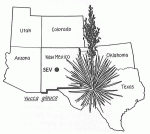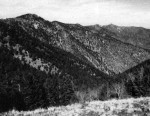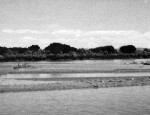The University of New Mexico’s (UNM) Sevilleta LTER has grown considerably in its second year of operation. The primary study site is the 400-square-mile Sevilleta National Wildlife Refuge, located 70 kilometers south of Albuquerque. The Sevilleta lies in the transition zone between four major biomes and contains extensive areas of short-grass prairie, Chihuahuan desert, Great Basin shrub- steppe and piñon-juniper woodland.
Site Expansion
In addition to the Sevilleta, the UNM LTER program has recently expanded its study sites to include the riparian cottonwood forests along the Rio Grande at Bosque del Apache National Wildlife Refuge (elevation 4,500 feet), and the subalpine forests and meadows of the Magdalena Mountains (elevation 10,700 feet) in Cibola National Forest. Inclusion of these important ecosystems in the Sevilleta research will allow UNM scientists to analyze the effects of regional climate dynamics on biotas from a wider variety of New Mexico’s habitats, ranging from hot, dry deserts to cool, moist forests. The addition of southwestern riparian and montane forests will also provide an increased opportunity for cross-site comparisons with other forested LTER sites.
New Field Station
With a grant from the National Science Foundation (NSF), construction of a permanent field research station on the Refuge will begin this winter. The facility will include a laboratory/office complex, a residence hall for up to 20 scientists and students, and a dining hall/conference center. Cliff Crawford will be the Field Station Director, and Bob Parmenter the Station Manager. The field station, scheduled to open April 1, 1991, will provide much-needed logistical support to the large number of researchers working in the Sevilleta and surrounding areas.
For additional information, contact Robert Parmenter, Biology Department, University of New Mexico, Albuquerque NM 87131.

 Enlarge this image
Enlarge this image

